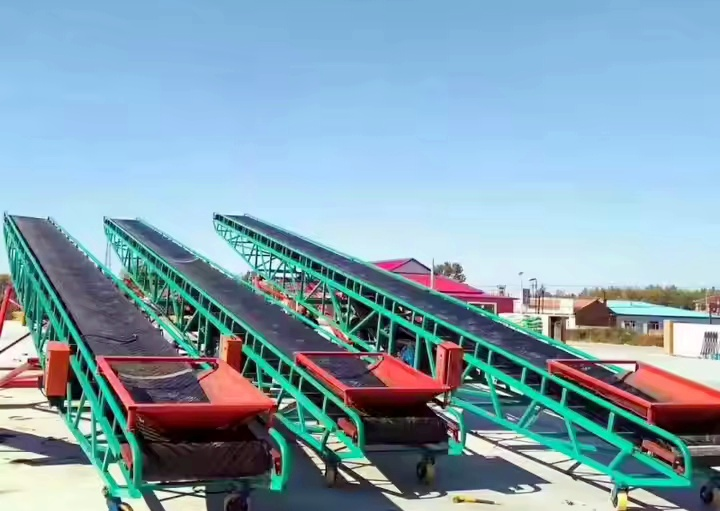
Belt conveyor system is a continuous conveying mechanical equipment, mainly used for the conveying of bulk materials or packaged goods. It occupies an important position in industrial production with its continuous, efficient and flexible characteristics. It is widely used in mining, ports, electricity, building materials, chemicals, grain and other industries for horizontal or inclined conveying of bulk materials or packaged goods.
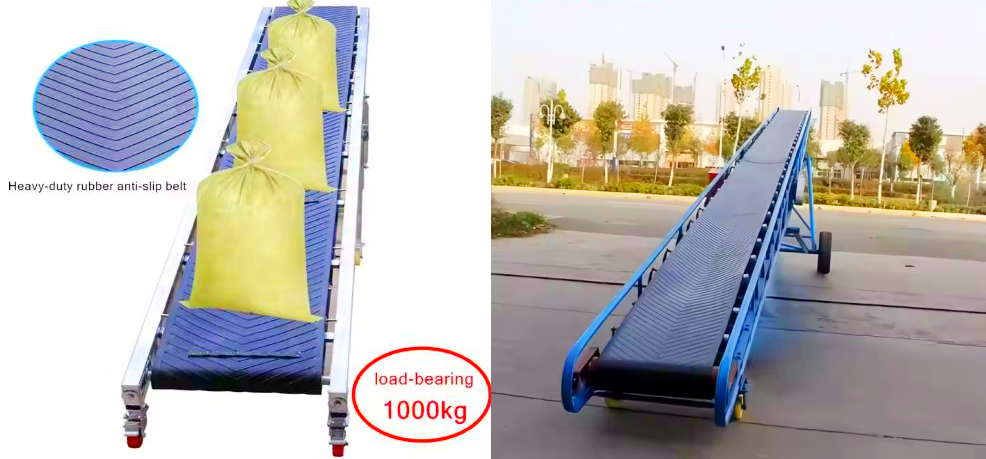
Belt conveyor system drives the roller through the motor to make the conveyor belt circulate along a fixed path. The material is placed on the conveyor belt and transported from the starting point to the end point as the belt moves. The system can run horizontally or tilted at a certain angle (usually not more than 20°-30°, depending on the characteristics of the material), and loading and unloading are completed by gravity or guide devices.

Belt conveyor system can transport a wide variety of materials, covering various industrial fields.
1. Bulk materials:
Granular materials: such as grains, sand, gravel, coal, ore, fertilizers, salt, sugar, plastic granules, chemical raw materials, etc.
Powdered materials: such as cement, fly ash, flour, milk powder, pigments, powdered medicine, etc.
Block materials: such as coal blocks, ore blocks, stones, wood chips, etc.
2. Piece goods:
Packaged products (such as cartons, bagged materials, barreled materials, canned materials, etc.), regular-shaped items (such as pallets, plates, pipes, etc.), irregular-shaped items (such as auto parts, clothing, packages, etc.)
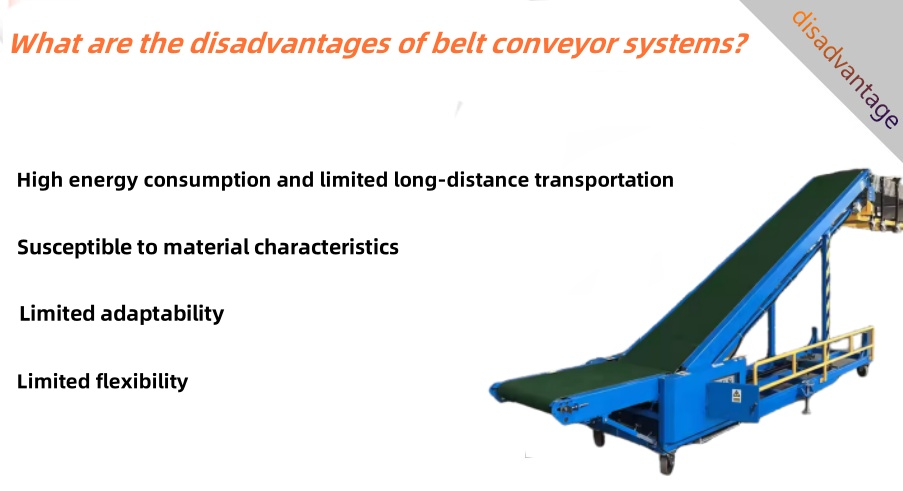
1. High energy consumption and limited long-distance transportation
When belt conveyor systems are transported over long distances (>5km), due to large friction losses, transmission efficiency is reduced, multiple drive units need to be installed, and energy consumption and maintenance costs increase. Therefore, large belt conveyor systems need to use soft start devices or variable frequency speed control systems.
2. Susceptible to material characteristics
✅For fine-grained materials such as cement, coal powder, and chemical powder, a large amount of dust may be generated during the conveying process of belt conveyor system
✅For sticky materials such as wet coal, wet sand, and mud, they may adhere to the machine wall of the belt conveyor system, causing blockage and difficulty in cleaning
✅Large foreign objects (such as metal, wood blocks, plastic bags, etc.) mixed into belt conveyor system during the conveying process may cause mechanical damage or blockage
3. Limited adaptability
The belt conveyor system is suitable for bulk materials, granular materials, bagged or boxed goods, but for super-heavy materials (such as large stones, large steel plates, etc.), the belt conveyor system may not be able to withstand it.
4. Limited flexibility
Belt conveyor system is difficult to adapt to temporary transportation needs. Although the mobile type is flexible, it still takes time to move and install. Unlike pipeline transportation or vehicles, belt conveyor system is difficult to achieve complex paths or sharp turns, and additional transfer equipment is required.
|
Belt width (mm) |
Maximum conveying capacity (t/h) |
Applicable industries |
|
500 |
100~300 |
Belt conveyor system is suitable for light industry, food, chemical industry, small materials |
|
650 |
200~500 |
Belt conveyor system is suitable for grain, building materials, and general bulk material transportation |
|
800 |
400~800 |
Belt conveyor system is suitable for ports, coal mines, and bulk cargo terminals |
|
1000 |
800~1200 |
Belt conveyor system is suitable for mines, metallurgy, and sand and gravel plants |
|
1200 |
1000~1500 |
Belt conveyor system is suitable for large mines, steel, and coal |
|
1400 and above |
1500~5000 |
Belt conveyor system is suitable for ultra-heavy transportation and large-volume port loading and unloading |
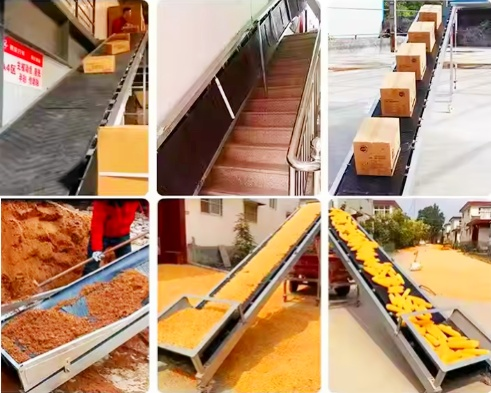
Package sorting line of e-commerce warehouse: high-speed belt conveyor system cooperates with automatic scanning and sorting equipment to quickly divert packages to different delivery areas according to the destination.
Long-distance transportation in coal mines: Multiple belt conveyor systems are connected end to end to form a transportation line of several kilometers to transport coal from the depths of the mine to the ground.
Continuous ship unloaders at port terminals: Screw or bucket ship unloaders unload bulk cargo onto belt conveyor systems, and then pass through multiple belt conveyor systems to the yard or rear factory.
Assembly line of automobile manufacturing plants: Different types of belt conveyor systems cooperate with automation equipment such as robotic arms to gradually transport automobile chassis, parts, etc. to assembly stations.
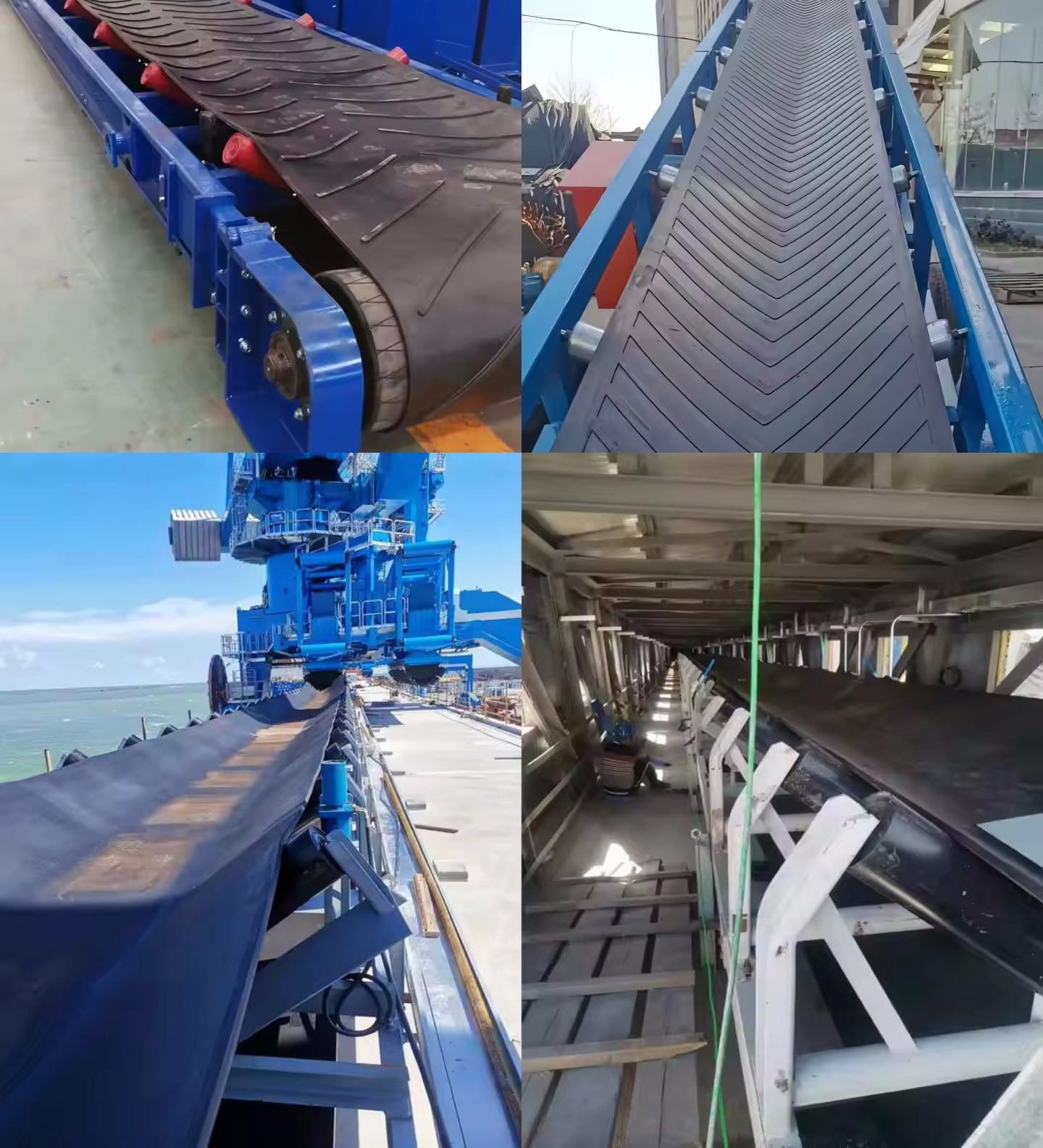
Belt conveyor systems are the core equipment of modern material transportation. The selection needs to comprehensively consider factors such as working principles, advantages, and applications. If you want to learn more about a certain aspect of the belt conveyor system (such as design parameters, prices, or working principles), you can tell Dahan Machinery's customer service, and we will further refine the answer!